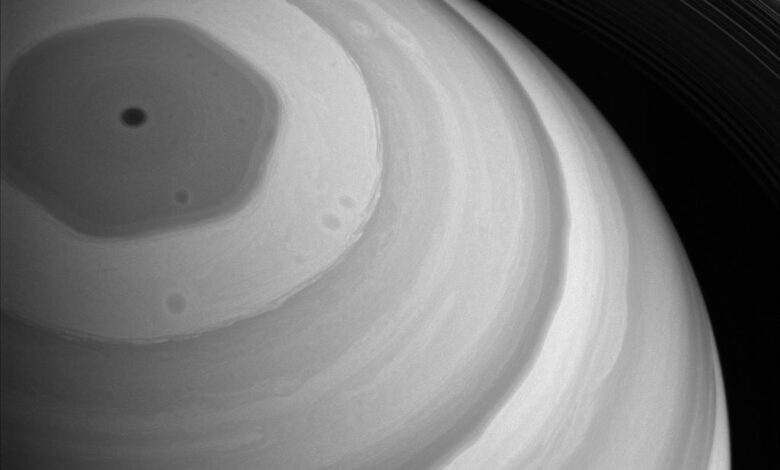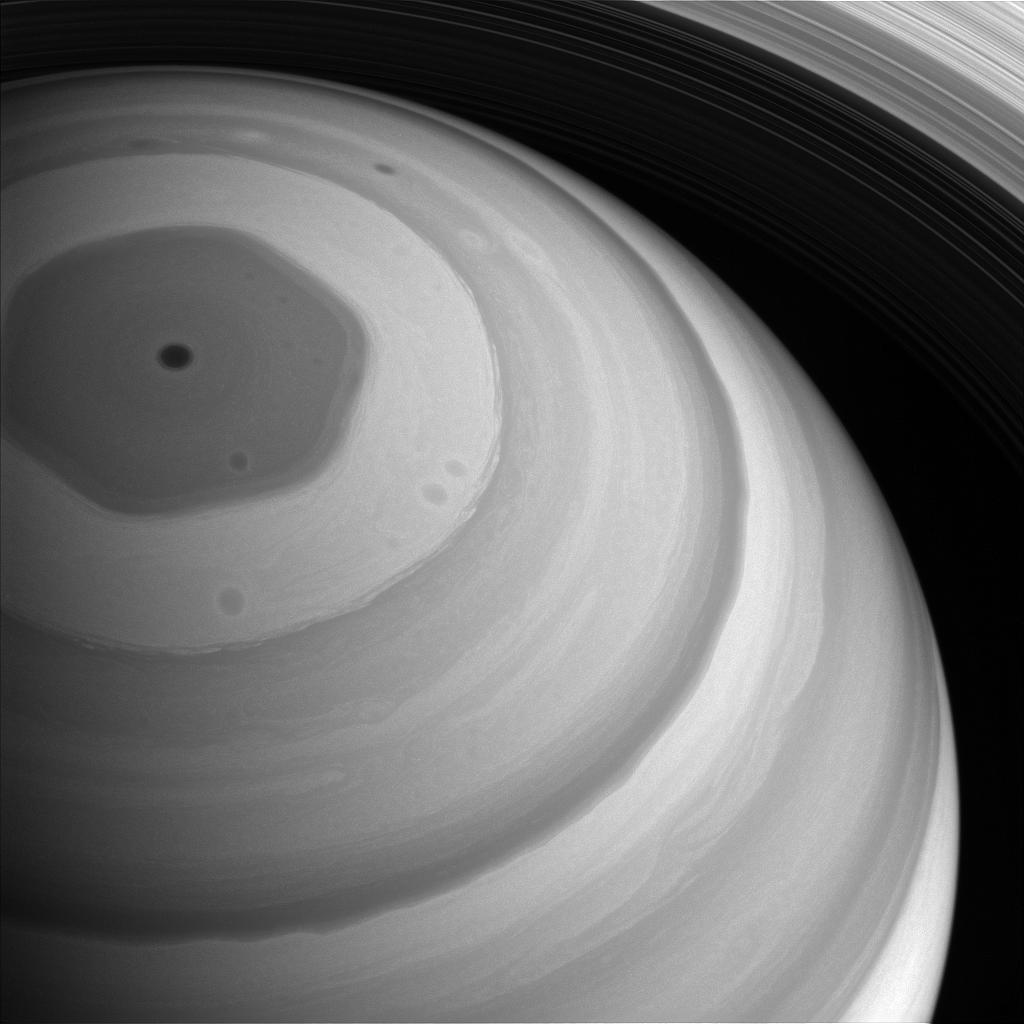Could you stand on the surface of Jupiter? Exploring the enigmatic outer planets

I get some pretty great questions from kids once they learn that I’m an astronomer. Several children have asked me if it is possible to stand on the surface of Jupiter. We know Jupiter has lots of clouds and a thick atmosphere. But if you went deep enough, and assuming you were not crushed by atmospheric pressure or the planet’s gravity, would you find land that you could stand on? To answer that question, we first need to peek under the clouds to get a feel for what these planets are like.
Jupiter’s oceans
Floating in the clouds of the Solar System’s giants are oceans.
As you descend into the atmosphere of the outer planets, two things happen: It gets hotter, and the pressure rises. Jupiter and Saturn are gas giants made of mostly hydrogen and helium. At a certain depth, the hydrogen, along with perhaps some liquid helium, compresses into an ocean. Jupiter’s ocean might be the largest in the Solar System, and it is so pressurized that the hydrogen loses its electrons, turning it into liquid metal. As it moves, this ocean creates an electrical current that gives Jupiter a magnetic field 15 times the size of the Sun. It is the largest magnetic field of any planet in the Solar System.
Uranus and Neptune might also have oceans, this time of liquid water. In addition to hydrogen and helium, these icy giants have high percentages of water and ice. While the idea is still controversial, some scientists believe that at a certain depth this water becomes liquid, and it might be mixed at the molecular level with minerals. This liquid might be super-heated above water’s boiling point, but high pressures in the clouds above keep it from boiling away.
Stormy weather, diamond rain
For 200 years, we have known about a storm on Jupiter called the Great Red Spot. The Earth could fit inside the Spot, and the storm extends about 350 kilometers down into the planet. (The tallest recorded thunderstorms on Earth are about 20 km tall.) At these depths, the temperature is too high for water to condense, meaning that storms on Jupiter operate very differently than those on Earth.
The fastest winds in the Solar System, meanwhile, belong to Neptune, and they rage at 2,000 km per hour. This speed can be explained in part by the atmosphere’s great shear, which is created by different latitude bands rotating at their own speeds. In addition, the cloud tops of Neptune are colder than -200°C, but the interior of the planet blazes at 5,100°C. This temperature difference contributes to the high winds.
Then there is Saturn’s weird hexagon, a six-sided cloud band over its north pole made by a polar jet stream. The shape is unique in the Solar System, and it might be formed by different layers rotating at different speeds.

Uranus and Neptune might have some other remarkable attributes. For example, there might be oceans and rainstorms of liquid diamonds on Uranus and Neptune. Here on Earth, scientists found that with enough heat and pressure, diamonds can liquefy without becoming graphite. While we have not observed liquid diamonds directly on Uranus and Neptune, the pressure and temperature have created the right conditions. Diamond rains may also happen on Saturn and Jupiter. There might be another peculiar kind of rain on Saturn. One of its rings rains material back down to the planet, and it contains a mixture of carbon dioxide, butane, propane, ammonia, and water.
Some like it hot
Beyond the strange rains, the interiors of the outer planets are remarkably hot. In fact, Saturn, Jupiter, and Neptune radiate more heat than they receive from the Sun, partially because, when they were formed, the planets cooled slowly as they radiated energy back into space. But what’s odd is that while we can explain Jupiter’s interior heat by this mechanism, we cannot do the same for Saturn, the other gas giant. Scientists have a hard time explaining why, but one idea is that Saturn could have helium rain. The Galileo probe detected helium rain on Jupiter, and if such a rain exists on Saturn, its effects could be amplified by Saturn’s lower internal entropy — that is, friction from the raindrops would heat the core of the planet. This idea has some merit, as the upper layers of Saturn have less helium than expected.
Uranus is the odd one out. It does not radiate much more heat than it receives from the Sun. The planet is much colder than its fellow ice giant, Neptune, even though Neptune’s orbit is farther from Uranus than Saturn’s orbit is from the Sun. So whatever process is heating Jupiter, Saturn, and Neptune is not happening in Uranus. The reason is a mystery. Some believe it might have to do with an event during its formation that knocked Uranus on its side, while others suggest it has something to do with the planet’s interior structure.
So, can you stand on Jupiter?
Now, we finally can circle back to the original question: Can you stand on the surface of Jupiter or any of these giants? Probably not.
Saturn’s clouds move at different speeds depending on latitude. Clouds near the poles move slower than those at the equator. This differential rotation is seen to a depth of 10,000 km, or one-sixth of the way into the planet. At Saturn’s core, which is about 12 to 20 times the size of Earth, there is a concentration of heavy elements.
In between Saturn’s core and its clouds, we can imagine a couple of scenarios. One consists of layers, and it comes with a clear definition between land and atmosphere. Many previous models of Saturn’s interior imagined such distinct layers, but there is another possibility: The core of Saturn becomes rocky only gradually, as hydrogen and helium slowly mix with the heavier elements in the core. Such a model is often referred to as a “fuzzy core.”
Six years ago, the Cassini space probe ended its mission and dropped through the clouds of Saturn. As it crashed into the planet, it sent out gravitational data that has been analyzed by scientists to determine the properties of the planet’s interior, and the observations favor a fuzzy core model. A similar core is suspected on Jupiter, while Uranus and Neptune may or may not have them. It is difficult to know for sure until we have more detailed observations of these planets.




